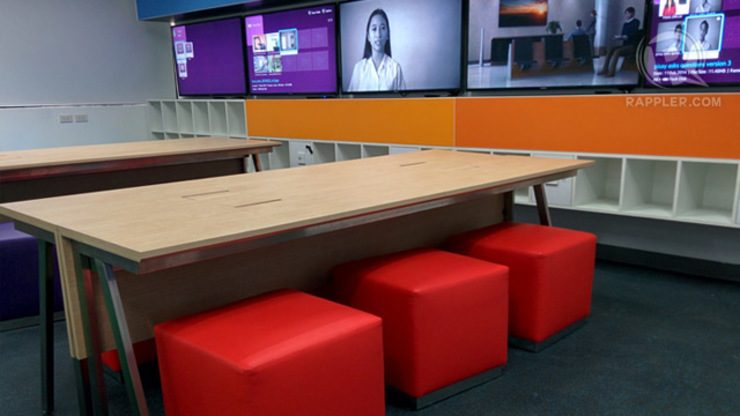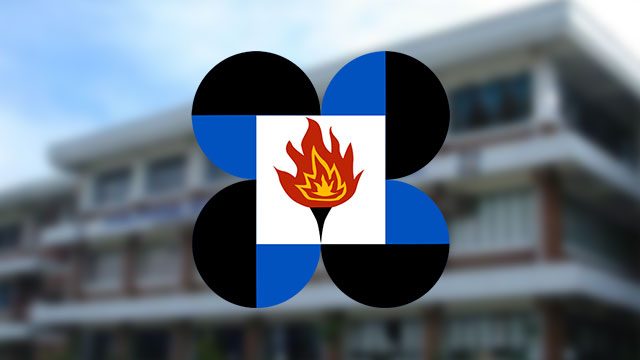SUMMARY
This is AI generated summarization, which may have errors. For context, always refer to the full article.
MANILA, Philippines – As it passes the half-century mark this year, the Philippine Science High School (PSHS) – the country’s main incubator for scientific talent – is setting its sights on bigger milestones ahead.
The PSHS, called “Pisay” by its students, staff, and alumni, first opened its doors to budding young scientists on 5 September 1964, with rented buildings along Elliptical Road in Quezon City as its first classrooms and offices.
Its mandate is to offer a curriculum focusing on science, technology, engineering and mathematics (STEM), to prepare students for a career in the sciences and engineering. The ultimate goal is to help beef up the country’s scientific manpower.
Five decades later, it has become a network of schools with campuses in almost every region, and has produced thousands of alumni not just in the sciences, but also in government, culture, business, and even showbiz.
As the institution celebrates its 50th year, the PSHS is keeping up with the times, in the face of challenges in various fronts and in a bid to maintain its status as one of the country’s top – if not the top – secondary schools.
From one campus to 13
The school has grown from one campus in Quezon City to a system comprising 13 campuses across the country. It has a mandate to establish a campus for each region, so it is still bound to grow – its target is to establish the 16 campuses by the end of the Aquino administration.
This poses challenges in maintaining the quality of learning across the system, with system-wide standards set for curriculum, grading, and even facilities.
But despite the aim for consistency, the system is also giving each campus the freedom to establish its own “mark.”
“We have to ensure that standards are followed in all campuses, but at the same time we need to give each campus freedom to find their own niche,” says Virginia Andres, campus director of the PSHS Main Campus.
Attracting students is also a challenge. The increasing number of science-oriented schools, despite showing the increasing awareness of the importance of science, is somehow affecting the PSHS’s aim of getting the best students.
Back when the PSHS started, its only “competition” was the Manila Science High School, opened by the city of Manila in 1963. Now, a student wanting to get a head start towards a science career can choose from a plethora of public and private institutions, all promising a future career in the sciences.
But Andres says the PSHS still has the upper hand, particularly with its curriculum. “Whether intentionally or unintentionally, [other] schools copy our curriculum,” she says. “They cannot deny the PSHS curriculum is still the standard.”
As a public institution, the PSHS gets regular government funding. But with many other pressing projects and matters that need public money, the school doesn’t always get everything it needs.
Despite the significant growth in the school’s budget in the past years, Andres says the PSHS will need a bigger budget, particularly with the implementation of additional grade levels as part of the K-12 system. “The government is doing its best,” she says. “It’s a challenge on how to get more from the government’s small pie,” she adds.

This is where alumni and outside partners step in. In the past few years, alumni, particularly jubilarian batches, have done fundraising activities to help fund much-needed facilities upgrades or construction of new facilities across the system.
Private companies have also approached the school for projects or tie-ups, such as the Samsung Smart Classroom.
Beyond the financial help, alumni of the school are happy to give back in many ways. Some become faculty; many others become research mentors or judges in competitions, and are readily available for advice, says Andres. She herself is an alumna of the PSHS, part of the class of 1984.
Aim: Best in ASEAN
The school is also setting its sights on a higher goal: to become one of the top high schools in Southeast Asia by 2016, in line with the regional economic integration.
“[Science Secretary Mario] Montejo’s vision is for the PSHS to become one of the leading high schools in ASEAN by 2016, so we’re trying to gear up towards that,” Andres says.
Despite being one of the first science-oriented secondary institutions in the region, other younger institutions have eclipsed the PSHS in popularity, facilities, and funding. But the school is again “being felt” in the region, through its performance in various science competitions and fairs.
FAST FACTS: Philippine Science High School
In connection with this, the school has been in the process of updating the curriculum, and has been implementing various projects across the system.
One of the most important transitions in the past few years is the curriculum change. Andres says the school understands that it is needed for the school to be competitive in the region.
For one, it opens up more opportunities for students and faculty to be more involved in actual STEM research, as well as in trainings and internships locally and abroad.
It also gives students some breathing room, she says. “[We cram a lot into] the 4-year curriculum, and in the end some students get demotivated instead of becoming more passionate towards a science career.”
The school has also tested some adjustments in the school calendar – for example, the school year started a few weeks late this year – to accommodate students going abroad for internships and research.
Being a leading school in ASEAN, however, isn’t just about facilities, funding, competition trophies, and rankings.
“When we say that we want to become one of the leading schools in ASEAN, its not basically just getting the top scores, having the best facilities, but we also have to find that niche where we can lead, where we can be unique, and where we can be a model,” Andres says.
“The potential is there, it’s just that harnessing the potential and giving them the right resources to reach that goal, that’s the concern,” she says.
The PSHS scholar, defined
“The PSHS offers an education that is humanistic in spirit, global in perspective and patriotic in orientation.”
– Excerpt from the PSHS mission statement
The school’s biggest – and most important – challenge, in the end, is producing well-rounded graduates.
“We want to help maintain the passion for science so that when they graduate, students would pursue careers in science not because it’s required in the [scholarship] contract, but because they were inspired to pursue a career in science,” she says.
This, she says, is not limited to training them in the sciences, but also developing their character, creativity, leadership skills, critical thinking, and love for country.
“We want…the school [to become] more inclusive of its students, to be able to really harness the potential of every student – the development of the total person,” she says.
The aim is when these students leave the school, aside from going on to become scientists, researchers, or engineers, is that they eventually serve the country, in whatever way they can.
“We do have a lot of graduates out there, in the field, not necessarily doing a lot of…inventing, [nor are they] popular, but they are doing service [to the country],” she says.
“Although the proportion of [PSHS] graduates to the total population of graduates may be small, the value of their contribution to society is immense,” says Dr Reynaldo Vea, currently President of the Mapua Institute of Technology (MIT) and a member of the class of 1969.
The coming years will test the resilience of the PSHS, but the school vows to continue soldiering on. “We’re expecting some failures, because we’re in transition, and we expect complaints both from the inside and outside, but we are aiming for a steady progress,” Andres adds. – Rappler.com
Add a comment
How does this make you feel?

There are no comments yet. Add your comment to start the conversation.